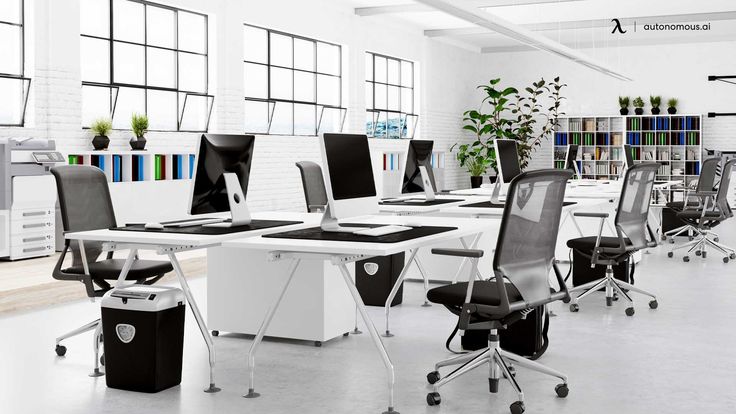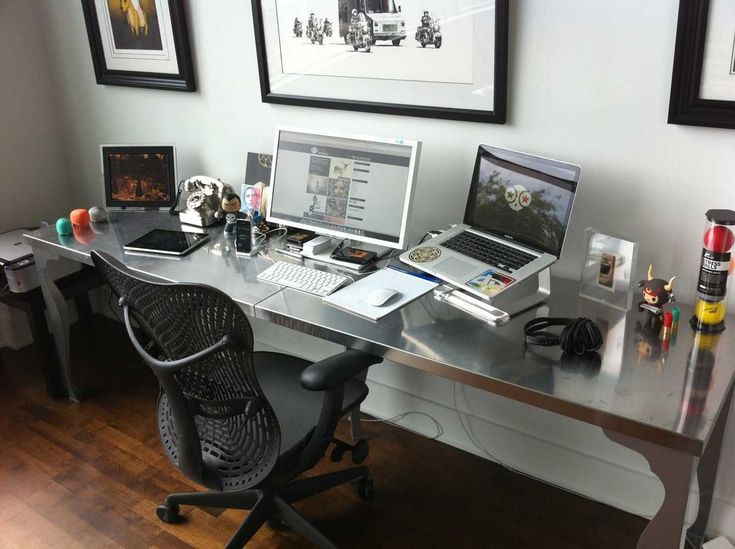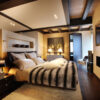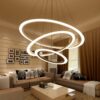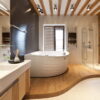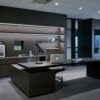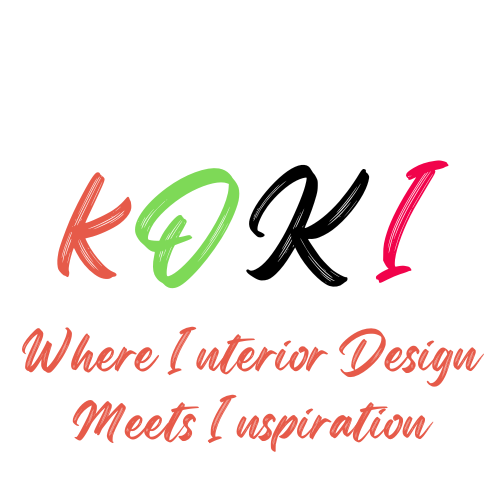Office design is more than just arranging desks and chairs; it’s about crafting an environment that boosts productivity, fosters collaboration, and enhances employee well-being. As the world transitions into a post-pandemic workplace, the role of office design has evolved significantly. Businesses are now more focused on creating spaces that maximize efficiency and drive profits, understanding that the physical environment plays a crucial role in how well employees perform.
In this context, modern office design has emerged as a key factor in enhancing productivity. Today’s workspaces are not merely a display of a company’s success; they are thoughtfully designed to promote flexibility, collaboration, and comfort. This shift, often referred to as modern office design, is what we’ll explore through various examples spanning different industries.
What is Modern Office Interior Design?
Modern office interior design is an approach that prioritizes employee comfort while creating functional and productive workspaces. In the fast-paced corporate world, where teamwork, communication, and productivity are critical, the design of an office can significantly impact the achievement of organizational goals. Modern office design integrates the latest trends, technologies, and work practices to create environments that not only look good but also support the well-being and productivity of employees.
Key Elements of Modern Office Design
Open Areas and Flexible Furniture
Modern offices often feature open spaces that encourage collaboration. These areas are furnished with flexible furniture that can be easily rearranged to accommodate different work styles and needs. This flexibility allows teams to interact more freely, fostering a sense of community and collaboration.
Personalized Workspaces
Gone are the days of sterile, uniform office cubicles. Today’s modern office design includes personal touches that make the workspace feel more homely and comfortable. Whether it’s a personal desk plant, a unique piece of art, or a customized seating arrangement, these elements contribute to a more inviting and personalized work environment.
Colour Psychology
Colours play a significant role in modern office design, influencing mood, productivity, and creativity. For example, calming blues and greens are often used in areas where focus and concentration are needed, while energizing reds or yellows may be found in collaborative spaces where creativity and interaction are encouraged.

Office workspace productivity
Biophilic Architecture
Biophilic design, which incorporates natural elements into the office environment, is a popular trend in modern office design. This approach brings the outdoors inside, using natural light, indoor plants, and nature-inspired textures and patterns to create a healthier, more relaxed atmosphere. The connection to nature helps reduce stress and improves overall well-being.
Integrated Technology
Incorporating technology seamlessly into the workspace is another hallmark of modern office design. From smart lighting systems that adjust based on natural light levels to wireless charging stations and advanced video conferencing facilities, integrated technology helps streamline work processes and enhances collaboration.
Ergonomic Furniture
Employee comfort is a top priority in modern office design, and ergonomic furniture plays a key role in achieving this. Adjustable chairs, sit-stand desks, and other ergonomic features help reduce strain and fatigue, leading to a more comfortable and productive work environment.
Adjustable Workstations
Recognizing that employees have different needs, modern office designs often include adjustable workstations. These spaces can be adapted to fit the specific requirements of each employee, whether they need a quiet area to focus or a collaborative space to work with a team. Adjustable workstations also contribute to a more welcoming and inclusive office atmosphere.
Light Integration
Natural light is a vital component of modern office design. Large windows, skylights, and glass partitions are commonly used to maximize the amount of natural light that enters the workspace. Additionally, modern offices often feature a combination of ambient, task, and accent lighting to create a well-balanced and adaptable lighting scheme. Proper lighting not only enhances the aesthetic appeal of the office but also contributes to employee well-being by reducing eye strain and improving mood.
Examples of Modern Office Interior Design
Modern office design can be seen across various industries, each with its unique requirements and challenges. Here are some examples:
Corporate Offices
Corporate offices often emphasize sleek, minimalist designs with a focus on functionality and professionalism. Open-plan layouts, glass-walled conference rooms, and stylish furniture create a modern, high-tech environment that fosters communication and productivity.
Industrial Offices
In industrial settings, modern office design blends functionality with rugged aesthetics. Exposed brick walls, metal accents, and sturdy furniture reflect the industrial nature of the work, while modern lighting and ergonomic furniture ensure comfort and efficiency.
Medical Offices
Modern medical offices prioritize cleanliness and comfort, with designs that promote a calming atmosphere for patients. Soft colours, comfortable seating, and well-organized workspaces create an environment that is both professional and welcoming.
Luxury Offices
Luxury office designs exude sophistication and elegance, often featuring high-end materials, custom furniture, and carefully curated artwork. These spaces are designed to impress clients and provide a luxurious working environment for employees.
Real Estate Offices
Real estate offices often incorporate elements that reflect the industry, such as large digital displays for showcasing properties and comfortable seating areas for client meetings. The design is both functional and inviting, creating a professional yet approachable atmosphere.

Office workspace productivity
Conclusion
Modern office interior design is about more than just aesthetics; it’s about creating a workspace that supports the needs of employees and enhances productivity. By incorporating elements like open spaces, ergonomic furniture, biophilic design, and integrated technology, modern offices can become environments where employees thrive and businesses succeed. Whether you’re designing a corporate office, an industrial workspace, or a luxury office, the principles of modern office design can help you create a space that meets the demands of today’s dynamic work environment.

